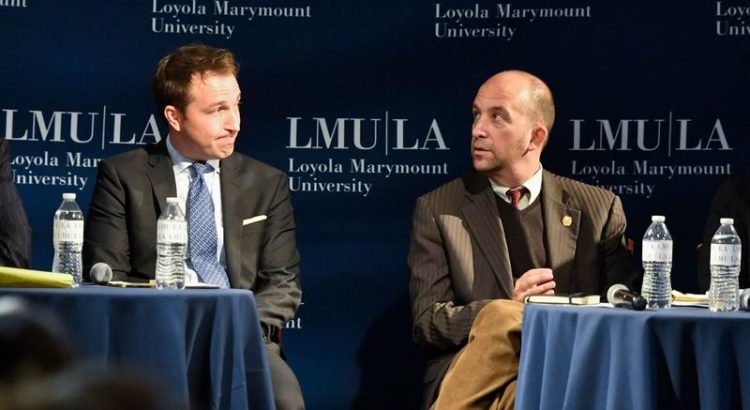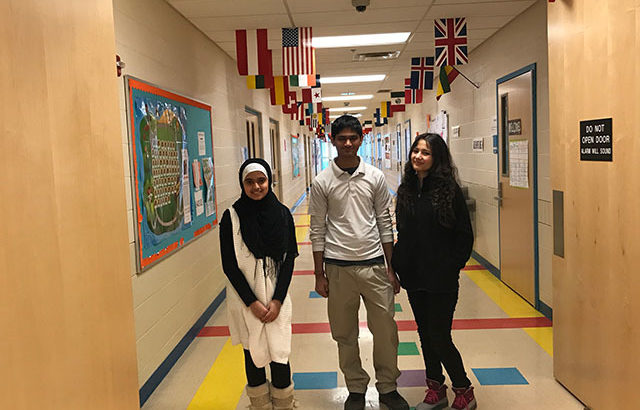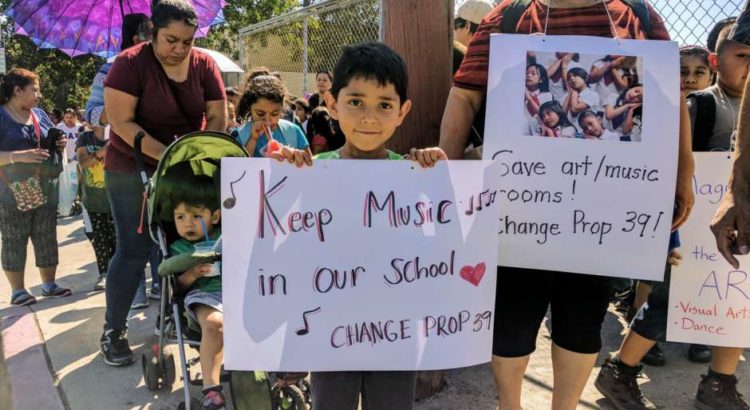Por: Noam Chomsky
El pasado 5 de diciembre Democracy Now! celebró su 20 aniversario en la histórica iglesia de Riverside de la ciudad de Nueva York. Entre los que hablaron ante los más de dos mil asistentes estaba el reconocido disidente político, lingüista y escritor Noam Chomsky. Chomsky se refirió a las dos amenazas más peligrosas que la especie humana enfrenta en la actualidad, la posibilidad de una guerra nuclear y la destrucción acelerada provocada por el cambio climático que generamos los seres humanos.
Solo me gustaría comenzar hablando sobre el privilegio y honor que suponen participar en la celebración del notable éxito que Democracy Now! ha obtenido en todos estos años, y en particular, por los asombrosos logros de Amy Goodman, Juan González y sus colegas; que nos muestran lo que debemos hacer para aspirar a una “democracia ya”. Será una larga lucha. Y de nuevo, es un enorme placer, no solo compartir esta ocasión con gente como Harry Belafonte, a quien admiro, y quien ha estado a la vanguardia de esta lucha interminable durante estos difíciles años.
Quiero dirigir unas palabras en especial a los jóvenes que se encuentran dentro del público: Ustedes enfrentarán problemas que no han surgido en más de 200.000 años de historia de la humanidad. Serán problemas difíciles y exigentes. Se trata de una carga que no se puede ignorar. Y todos nosotros, pero sobre todo ustedes en particular, tendrán que luchar fuertemente para salvar a la especie humana de un destino sombrío.
Los resultados de las elecciones nos sorprendieron a mi esposa y a mi en Europa. Aquél fatídico 8 de noviembre estábamos en Barcelona, viendo los resultados. Lo que ocurrió me impactó personalmente. El primer artículo que escribí, hasta donde puedo recordar, fue en febrero de 1939, y trataba sobre la caída de Barcelona ante las fuerzas fascistas de Franco. Dicho artículo, que estoy seguro no fue muy memorable trataba de la propagación, aparentemente inexorable, del fascismo en Europa y probablemente alrededor del mundo. Soy lo suficientemente viejo como para haber escuchado los discursos de Hitler [en] las marchas de Nuremberg, y aunque no pude entender ni una palabra, el tono y la reacción de la multitud me dejaron recuerdos imborrables. De modo que los resultados me despertaron recuerdos muy desagradables, en especial por lo que está sucediendo actualmente en Europa, que también es bastante alarmante.
Pues bien, Europa reaccionó con incredulidad, conmoción y horror a ese 8 de noviembre. La cubierta de la revista alemana más importante, Der Spiegel, supo capturar elocuentemente ese sentimiento, mediante una caricatura de Donald Trump en la que se le mostraba como un meteoro en dirección a la tierra y con la boca abierta, listo para tragársela. El titular que la acompañaba, decía: “Das Ende der Welt!” “El fin del mundo”. Más abajo, en letras pequeñas, se veía también la frase: “tal y como lo conocemos”. Esa preocupación puede llegar a expresar una preocupación verdadera, aunque no de la forma literal que la proponen el artista, los autores, y todos aquellos que se hicieron eco de esa idea.
Esto tiene que ver con otros acontecimientos que tuvieron lugar justo al mismo tiempo, ese mismo 8 de noviembre. Acontecimientos que me parecen mucho más importantes que aquéllos que captaron la atención del mundo de manera tan sorprendente. Acontecimientos que estaban ocurriendo, por ejemplo, en Marrakech, Marrruecos, en donde se llevó a cabo una conferencia de 200 países. La denominada “COP 22”. El objetivo de esta conferencia era empezar a poner en práctica las vagas promesas y compromisos de la anterior conferencia internacional sobre el calentamiento global, la denominada “COP 21”, que tuvo lugar en París en diciembre de 2015, y que no produjo efectos concretos por razones no relacionadas a lo que ocurrió el 8 de noviembre aquí.
[…]
El aislamiento de Estados Unidos en Marrakech es sintomático de otros procesos más amplios sobre los que deberíamos meditar muy cuidadosamente, por ser de una importancia considerable. El aislamiento de Estados Unidos en el mundo está aumentando notablemente. Tal vez lo más llamativo suceda aquí mismo, en este hemisferio, en lo que el secretario de Guerra del presidente Roosevelt, Henry Stimson, denominó como «nuestra pequeña región», donde nadie nos molesta. Solíamos considerar que si alguien se pasaba de la raya, los castigaríamos con dureza, a menos que hicieran lo que dijéramos. Eso está ahora lejos de ser cierto. Durante este siglo y por primera vez en 500 años, America Latina se ha liberado del imperialismo occidental. Estados Unidos es el siglo pasado. El Fondo Monetario Internacional, que es, en otras palabras, una agencia del Departamento del Tesoro de Estados Unidos ha sido expulsado en su totalidad de América del Sur. Ya no quedan bases militares estadounidenses allí [1]. Las organizaciones internacionales de este hemisferio Han empezando a excluir a Estados Unidos y Canadá. En 2015 hubo una cumbre mundial que habría podido derivar en la total exclusión de Estados Unidos del hemisferio por el asunto con Cuba. Cuba se convirtió en un asunto crucial debido a que todo el hemisferio se oponía a la política de Estados Unidos, tal y como lo hace el resto del mundo. Esta fue sin duda la razón por la que Obama tuvo gestos hacia la normalización [de las relaciones con Cuba], dando un paso hacia adelante, que sin embargo podría ser revertido por Trump. No lo sabemos.
Algo similar ocurre en Asia a una escala mucho mayor. Como se sabe, una de las principales políticas de Obama fue la llamada «giro a Asia», la cual en realidad fue una medida para confrontar de forma transparente a China. Una de las estrategias de esa política fue el TPP , o Acuerdo Transpacífico de Asociación Económica, que excluía a China e intentaba integrar a otros países del pacífico asiático. Dicho acuerdo, por razones que me parecen muy afortunadas, parece estar colapsando hoy día. Pero simultáneamente, existe un tratado de comercio internacional que crece y se expande. China le denomina el Partenariado Económico Comprehensivo Regional (PECR), cuyos alcances empiezan a dibujarse sobre los aliados de Estados Unidos; desde Perú a Australia, pasando por Japón. Es probable que Estados Unidos decida quedarse por fuera de él, del mismo modo que de forma solitaria se ha mantenido al margen del Banco Asiático de Inversión en Infraestructura, una especie de contrapartida al Banco Mundial, y al que Estados Unidos se opone desde hace años. A éste, hoy día, se han sumado prácticamente todos sus aliados, incluyendo, entre otros, Gran Bretaña. Al mismo tiempo, China se está expandiendo hacia occidente con la Organización de Cooperación de Shanghái, la Ruta de la Seda en China. Se trata de un sistema integrado de distribución de recursos de energía, que incluye a Siberia, rica en recursos; India y Pakistán, y a la que pronto se sumarán Irán y probablemente Turquía. Se extenderá desde China hasta Europa. Estados Unidos ha solicitado tener el estatus de observador, pero esta petición le ha sido negada, no se le ha permitido. Y uno de los principales compromisos adquiridos por la Organización de Cooperación de Shanghái, es la prohibición de establecer bases militares dentro de toda la región de países de Asia Central.
Si el presidente electo decide cumplir con su promesa de poner fin a las armas nucleares, en otras palabras, al Acuerdo Nuclear con Irán, Estados Unidos estaría dando otro paso hacia el aislamiento. Algunos otros países, principalmente de Europa, que hacen parte del acuerdo, podrían sin embargo continuar. Esto significaría ignorar las sanciones impuestas por Estados Unidos, y ello derivaría en aislarse incluso de Europa. Bajo estas circunstancias, es probable que Europa dé marcha atrás en la confrontación con Rusia. De hecho, el Bréxit podría ayudar a la consolidación de esta situación, pues Gran Bretaña era la voz más fuerte de Estados Unidos en la OTAN , pero dado que ahora está fuera, Europa tendría algunas oportunidades. De 1990 a 1991, durante el colapso de la Unión Soviética, se tomaron algunas decisiones. Mikhail Gorbachov tuvo la visión, como él mismo la denominó, de que Europa fuera un hogar común de integración. Una especie de sistema cooperativo de seguridad, comercio e intercambio; sin alianzas militares desde el Atlántico al Pacífico. Estados Unidos insistió por una visión diferente— específicamente, ante el colapso de la Unión Soviética, la OTAN se mantiene, y de hecho, ahora se extiende hasta las fronteras de Rusia, donde hoy se cuecen diariamente amenazas graves.
Todos estos hechos resultan muy relevantes. Están relacionados al tema ampliamente discutido sobre el declive del poder de Estados Unidos. Existen algunas medidas convencionales que, sin embargo, producen una confusión interesante. Me referiré a ello brevemente, por la premura del tiempo, aunque es algo sobre lo que se debe reflexionar seriamente. Según las medidas convencionales, en 1945, Estados Unidos dominaba el mundo, como nunca en la historia. Poseía cerca del 50 % de la riqueza global, mientras que otros países industriales estaban devastados, destruidos o seriamente afectados por la guerra. Su economía se benefició enormemente de la guerra y a partir de ese momento, Estados Unidos consiguió una posición de dominio sin precedentes históricos. Ello, por supuesto, iba a terminar algún día: esos otros países industrializados se reconstruyeron. Hacia 1970 el mundo tenía tres polos, tres ejes económicos: Europa con sede en Alemania, América del Norte, con sede en Estados Unidos y la zona noroccidental de Asia, con sede en Japón. Ahora China se ha convertido en un socio, dejando de ser solo un conflicto. Para entonces, la participación de Estados Unidos dentro de la riqueza mundial, era del 25 %, aunque hoy día no está muy por debajo de esa cifra.
Todo esto puede derivar en conclusiones equivocadas, dado que el análisis ignora un hecho crucial que ha dejado de discutirse, a pesar de que existen algunos trabajos interesantes sobre el tema. Se trata de la propiedad sobre la economía mundial. ¿Qué es en realidad lo que poseen las grandes corporaciones, las multinacionales que operan alrededor del mundo? Bien, pues esto deriva en algo muy interesante que prácticamente explica el crecimiento de todo el período de globalización neoliberal de esta generación. El patrimonio de las grandes corporaciones se está traduciendo en una forma más realista de medir el poder mundial más allá de la riqueza de una nación. El patrimonio de una corporación reside obviamente en un país, apoyado en nuestras contribuciones de impuestos, aunque la propiedad no tiene nada que ver con nosotros. Cuando se las mira de cerca, se concluye que las corporaciones son virtualmente dueñas de todos los sectores de la economía: manufactura, finanzas, servicios, minoristas… las corporaciones de Estados Unidos encabezan la propiedad de la economía mundial. Se podría decir que son dueños de cerca del 50 % de ésta, lo que corresponde, aproximadamente, a la riqueza nacional de Estados Unidos en 1945. Este hecho debería ser capaz de decirnos algo sobre la naturaleza del mundo en el que vivimos. Esto, por su puesto, no representa necesariamente un beneficio para los ciudadanos estadounidenses, sino para los que poseen y administran éstas corporaciones privadas, estos sistemas cuasi-totalitarios, subsidiadas tanto en lo público como en lo privado. En el nivel militar, Estados Unidos tiene un dominio sin par, cosa que no hay que discutir si quiera. Pero es posible que Europa adquiera una mayor independencia, siguiendo algo similar a la visión de Gorbachov. Esto podría atenuar las peligrosas tensiones de la frontera rusa, lo que sería un acontecimiento muy positivo.
Hay muchas más cosas que discutir respecto de estos temores, esperanzas y perspectivas. Existen amenazas y peligros concretos. Existen también muchas oportunidades. Nos enfrentamos nuevamente a ello; pero es la gente más joven la llamada a entender que estas amenazas son las más graves que han surgido en la historia de la humanidad. La guerra nuclear y la catástrofe ambiental, son afrentas literales a la supervivencia. Se trata de preocupaciones urgentes que no dan espera, y que a partir del 8 de noviembre se volvieron apremiantes por las razones que ustedes ya conocen y que también he mencionado. Estos asuntos tendrán que ser afrontados prontamente y y de forma directa, si es que el experimento humano no quiere ser un fracaso terrible.
Abajo la conferencia completa.
Sobre DEMOCRACY NOW!
La primera vez que Democracy Now salió al aire fue en la víspera de las elecciones primarias de New Hampshire, en 1996, el día 19 de febrero de ese año. Democracy Now! comenzó como un programa de radio transmitido en un puñado de estaciones. Hoy en día, más de 5.000 episodios más tarde, Democracy Now! se emite en más de 1.400 canales de televisión pública y estaciones de radio de todo el mundo.
Nota de Rebelión.org:
[1] Pese a las afirmaciones del profesor Chomsky, el FMI está presente en Colombia, en Paraguay, Perú y ha vuelto a Brasil y Argentina hace meses. Con respecto a la afirmación de que no hay bases militares estadounidenses en la región, varias fuentes han reportado que hay decenas de bases militares, 80 según algunos conteos: en Perú, Colombia, Chile y otros. Algunos enlaces sobre estos dos temas:
El FMI en América del Sur:
http://economia.estadao.com.br/noticias/geral,brasil-fecha-acordo-para-emprestar-dinheiro-ao-fmi,10000081443
http://www.imf.org/es/Countries/ResRep/PRY
https://www.pagina12.com.ar/diario/economia/2-308984-2016-09-09.html
http://www.colombia.com/financiero/especiales/2_150101_fmi/colombia_fmi.asp
Sobre bases militares de EE.UU. en América Latina:
http://www.telesurtv.net/news/Llaman-a-erradicar-bases-militares-de-EEUU-en-America-Latina-20160828-0010.html
http://www.cubadebate.cu/noticias/2016/05/11/bases-militares-de-eeuu-en-colombia-apuntan-a-venezuela/#.WG2Lh84n2FI
http://www.laizquierdadiario.cl/Las-bases-militares-de-Estados-Unidos-en-Chile-y-America-Latina
Fuente: http://www.rebelion.org/noticia.php?id=221238&titular=tendr%E1n-que-luchar-fuertemente-para-salvar-a-la-especie-humana-
















 Users Today : 23
Users Today : 23 Total Users : 35460040
Total Users : 35460040 Views Today : 31
Views Today : 31 Total views : 3418662
Total views : 3418662